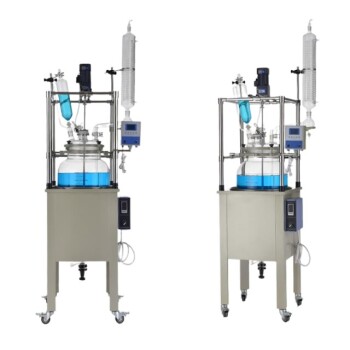The temperature of a rotary evaporator, specifically the water bath temperature, typically ranges between 25°C to 50°C for most common lab solvents. This range is chosen to balance evaporation efficiency and the risk of bumping, which is the sudden boiling of the solvent that can lead to sample loss or contamination. Lower temperatures reduce the risk of bumping but slow down the evaporation process. The exact temperature setting depends on the solvent's boiling point, the vacuum level applied, and the sensitivity of the sample being processed. Precise control of the water bath temperature, along with other factors like rotation speed and vacuum level, is crucial for optimal performance and sample integrity.
Key Points Explained:

-
Typical Temperature Range for Rotary Evaporators:
- The water bath temperature in a rotary evaporator is usually set between 25°C to 50°C for most common lab solvents. This range ensures efficient evaporation while minimizing the risk of bumping.
- Lower temperatures (closer to 25°C) are safer for heat-sensitive samples but may slow down the evaporation process. Higher temperatures (up to 50°C) can speed up evaporation but increase the risk of bumping.
-
Factors Influencing Temperature Selection:
- Solvent Boiling Point: The temperature of the water bath should be set slightly below the boiling point of the solvent under the applied vacuum. This ensures efficient evaporation without overheating the sample.
- Sample Sensitivity: Heat-sensitive samples require lower temperatures to prevent degradation or damage.
- Vacuum Level: A higher vacuum lowers the boiling point of the solvent, allowing evaporation at lower temperatures. This is particularly useful for heat-sensitive compounds.
-
Balancing Efficiency and Safety:
- Efficiency: Higher temperatures and faster rotation speeds can increase the evaporation rate, but they must be balanced against the risk of bumping and sample degradation.
- Safety: Lower temperatures reduce the risk of bumping, which can cause sample loss or contamination. This is especially important when working with volatile or heat-sensitive compounds.
-
Role of Other Parameters:
- Rotation Speed: Faster rotation increases the surface area of the solvent, enhancing evaporation. However, excessively high speeds can cause mechanical damage or reduce efficiency.
- Vacuum Level: A higher vacuum lowers the boiling point of the solvent, enabling evaporation at lower temperatures. This is critical for preserving heat-sensitive samples.
- Condenser Efficiency: Effective cooling of the condenser ensures that evaporated solvents are efficiently recovered, preventing loss and contamination.
-
Practical Considerations for Equipment Purchasers:
- Temperature Control Precision: Look for rotary evaporators with precise and adjustable temperature controls to handle a wide range of solvents and sample types.
- Safety Features: Ensure the equipment has features like bump traps and automatic shut-off to prevent accidents during operation.
- Compatibility: Consider the size of the rotovap and its compatibility with the solvents and sample volumes you typically work with.
By understanding these factors, equipment and consumable purchasers can make informed decisions about rotary evaporators that meet their specific needs, ensuring both efficiency and safety in their laboratory processes.
Summary Table:
| Parameter | Details |
|---|---|
| Temperature Range | 25°C to 50°C for most common lab solvents |
| Solvent Boiling Point | Set slightly below boiling point under vacuum for efficient evaporation |
| Sample Sensitivity | Lower temperatures for heat-sensitive samples to prevent degradation |
| Vacuum Level | Higher vacuum lowers boiling point, enabling evaporation at lower temps |
| Rotation Speed | Faster speeds enhance evaporation but must avoid mechanical damage |
| Condenser Efficiency | Ensures effective recovery of evaporated solvents, preventing loss |
| Safety Features | Bump traps and automatic shut-off to prevent accidents |
Need help selecting the right rotary evaporator for your lab? Contact our experts today for personalized advice!











